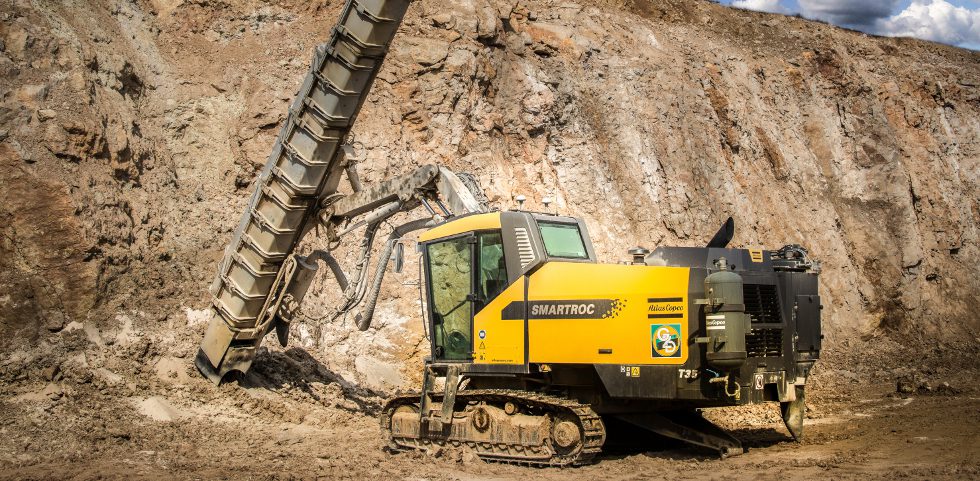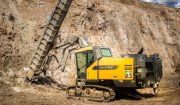Technology in the surface drilling industry has made quantum leaps forward over the past few years. It has never been easier to drill blastholes in open pit mines and quarries.
These days, our ?smart? drill rigs, find their own way to the hole and then proceed to drill it to the required depth and angle automatically.
But no-one was quite prepared for the progress Atlas Copco has made in reducing the amount of diesel fuel that these machines consume every day.
About five years ago, we took the initiative to see what could be done in this area and our research led to a completely new design platform that focused on efficiency, high utilization and increased fuel efficiency.
Today our rigs are setting records for outstanding fuel consumption around the globe. And this, in turn, is reducing our customers? operating costs, in some cases by as much as 50 per cent.
The simple calculation above (Fig 1) clearly illustrates just how important these savings can be for equipment owners and managers. It shows what happens if fuel consumption is cut by just 10 liters per hour.
Significant savings for all
For many contractors with a single drill rig, a potential saving of USD 100 000 over five years is a significant saving. For owners with a fleet of, say, five rigs, the corresponding saving is USD 500 000, and for those with 10 rigs, the saving will be in the region of USD 1 million.
So what is it that makes these machines so fuel-efficient? Basically, it lies in the way they utilize power and energy. The SmartROC, for instance, consumes the least amount of fuel for its size and type ? 16 l/h on average, which is the lowest fuel consumption per meter in the industry. This is thanks to a computer controlled engine that is optimized to always use the least amount of fuel whatever function is being carried out. The engine?s rpm constantly rises and falls, depending on the load. Consequently, this reduces fuel consumption and prolongs the life of the engine.
In addition to this, the rigs? hydraulic systems are designed to only deliver hydraulic oil when it is required, compared to conventional rigs which pump oil constantly, and the hydraulic valves are located closer to where the power is consumed.
As a result, we have reduced the amount of oil that is pumped by 65% and the number of hydraulic hoses by 50%. This too, helps to reduce fuel consumption, and every liter saved means we also reduce CO 2 emissions, which has a positive effect on the working environment on the site as well as in the surrounding environment.
The operator?s contribution
According to our estimations, 30% of these fuel savings is directly attributable to the rig?s new design platform, but that a further 20% can be achieved by the operators. This is because the functions for hole flushing, dust collection and dust binding are now electronically adjustable.
1 HOLE FLUSHING This function has the biggest impact on fuel consumption and is provided by the onboard compressor. Flushing is normally done at maximum air speed, but on SmartROC tophammer rigs the operator can adjust the speed of the flow from 0 to 100%.
As a result, the operator is able to ?finetune? the supply of air so that no more power is used than is absolutely necessary to flush the cuttings out of the hole. And this means the engine does not have to work harder than it needs to, which, in turn, reduces fuel consumption as well as CO 2 emissions.
2 DUST COLLECTING Another fuel saving innovation is the dust collector system. This, too, has been made adjustable to allow the operator to fine-tune the system. By using just the right amount of suction capacity to collect the dust, depending on the conditions, the load on the engine will be less and fuel consumption will be kept low.
3 DUST BINDING In the same way, the small amount of water that is used to bind the dust, can be fine-tuned according to the density of the dust. This, too, requires less engine power and therefore less fuel.
As he performs these tasks, the operator can easily see the actual fuel consumption on the SmartROC?s screen. Our research shows that a relatively unskilled operator can easily achieve fuel savings of up to 30%, but that it is possible for operators to achieve savings in the region of 50%, and, for many companies, that extra 20% represents a significant reduction in running costs per year.
Obviously, not all companies attach the same importance to fuel consumption in their operations. Costs depend largely on local prices. But I am convinced that all companies appreciate that saving on fuel has a positive impact on operating costs, and as a consequence, will impact their ?bottom line?over time.
Epiroc operated under the trademark “Atlas Copco” prior to January 1, 2018.



Here:
Us: